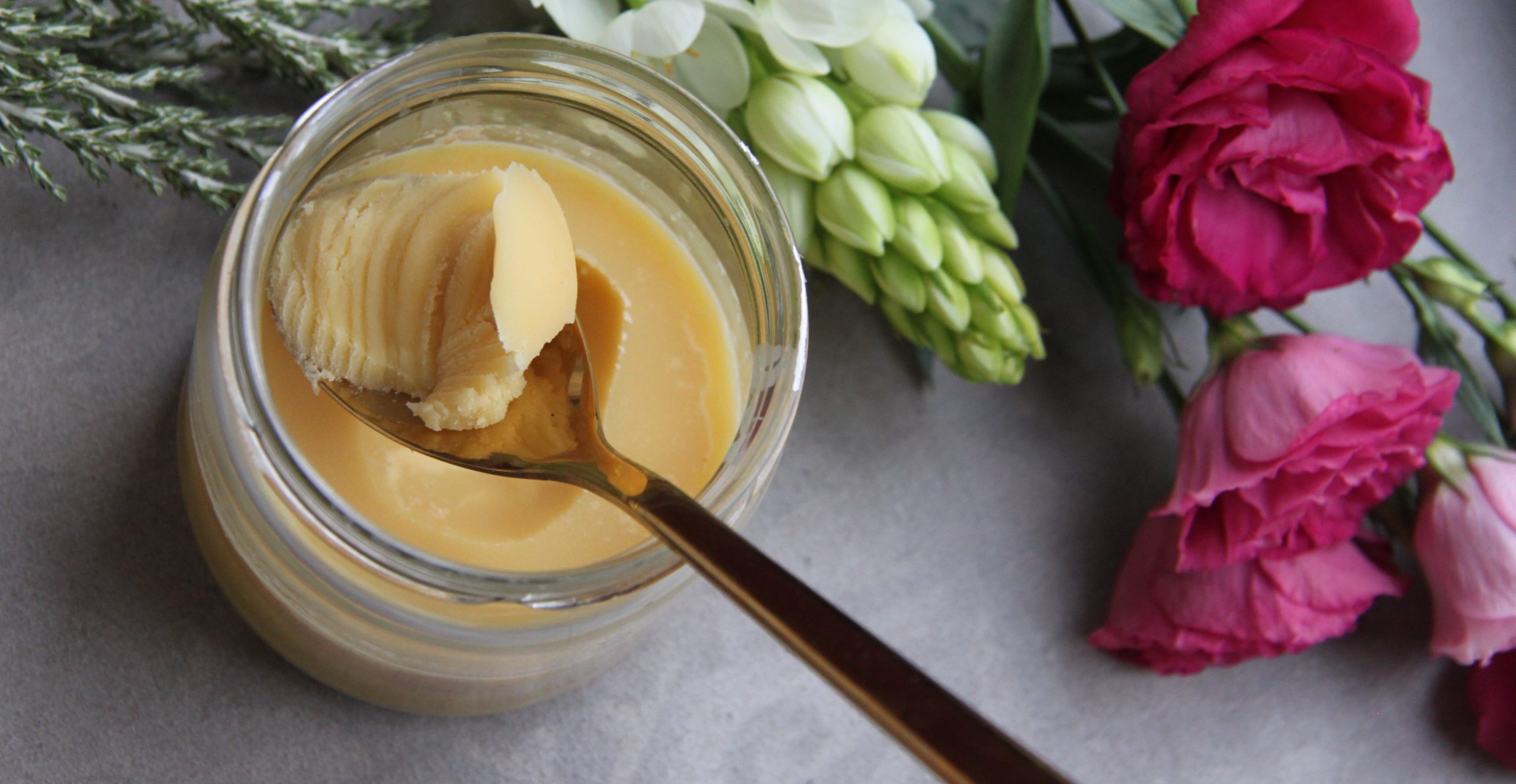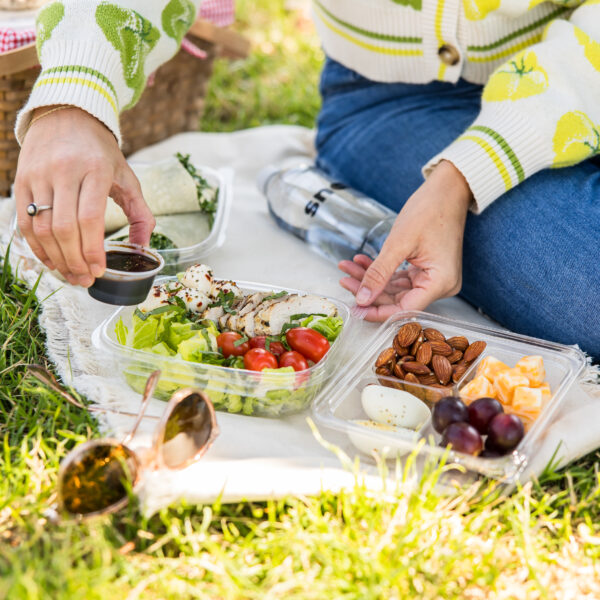Ghee is a fat that originated in Ancient India and has since been used in Indian, Middle Eastern, and Southeast Asian cuisines for thousands of years. It’s also been used in ayurvedic medicine, traditional medicine, and religious rituals. Despite its rich culinary and medicinal history, most people have only just discovered the wonders of ghee in the last decade. Though some view it as a superfood, others have yet to buy into the hype. Here’s a little bit about one of our favorite types of fat, as well as three ways to use it in your cooking!
First, What is Ghee?
Ghee is also known as clarified butter and is essentially butter that has had its water and milk solids removed. It’s typically made by heating butter on the stovetop until the liquid evaporates and the milk solids settle at the bottom, turning golden or dark brown. The ghee remains on top and the milk solids can be strained out before transferring the ghee to glass jars.
It’s quite easy to make at home using grass-fed butter.
While ghee and butter share many of the same properties, the removal of the water and milk solids means that its smoke point is 485 degrees Fahrenheit compared to butter at 350 degrees Fahrenheit.
This makes it much more versatile and a great choice for higher heat cooking.
Ghee and butter also have a different flavor profile. While butter is a bit sweeter, ghee has a nutty and rich flavor.
Plus, since ghee doesn’t have any water remaining in the final product, it is shelf-stable and can be kept out on the counter for extended periods.
Is Ghee Healthy?
While this depends on who you ask, the objective answer is yes!
Here at Snap Kitchen, we consider ghee a healthy fat and use it in many of our dishes. It contains a lot of the same nutrients as butter, which was previously maligned as being unhealthy (before being vindicated by most progressive health experts). Like butter, it contains vitamins A, E, and K, as well as both saturated and monounsaturated fat.
It also has butyric acid and other short-chain fatty acids, which have been shown in preliminary research to benefit gut health and reduce inflammation! Like butter, it contains conjugated linoleic acid (CLA), a fat that may help with fat loss, may be anti-inflammatory, and may benefit heart health.
Since ghee is primarily made up of saturated fat, it’s more stable and less easily oxidized during cooking, making it a superior choice to almost all vegetable oils. (If you’re worried about saturated fat’s supposed link to heart disease, head here for more on the diet-heart myth.)
Opponents of ghee say that since ghee is produced at high heat, the cholesterol it contains may become oxidized. As we’ve talked about recently in our post about olive oil, oxidation within the body is linked to an increased risk for a variety of chronic diseases, including heart disease. But honestly, more research needs to be done in this area.
The main differences between ghee and butter are ghee’s high smoke point and the fact that ghee is free of lactose and casein. If you’re sensitive to dairy, ghee is a great option for you!
How Can I Use Ghee in My Food or Cooking?
Since ghee has a higher smoke point than butter, it’s a great choice for higher heat cooking! Here are some amazing ways to use ghee:
- Use it as the oil in your cast iron pan for searing meat, or saute your veggies. The higher temperature will allow you to cook at a higher temperature and get the sear you want while keeping what you’re cooking as tender as possible.
- You can even cook your eggs in it! While one tablespoon is generally considered a serving, if it’s the only fat on your plate in a given meal, I’d recommend doing 1-2 tablespoons.
- You can also bake with ghee to give your baked goods that nutty and rich flavor. Many prefer to use butter for most baking recipes as it’s creamier and sweeter, but it really depends on what flavor you want to achieve; Ghee shines in savory recipes rather than sweet ones.
We use ghee in many of our dishes, and it plays a starring role in customer-favorites like our naked salmon, butter chicken, and our delightful turnip mash.
The bottom line? Both butter and ghee are awesome options to add more healthy fat to your meals. If your budget allows, opt for 100% grass-fed butter or ghee. Not only are 100% grass-fed cows raised more naturally and sustainably, but their butter is more nutrient-dense, with more vitamin K2, CLA, butyrate, and omega-3 fats than their conventionally-raised counterparts.





Leave a Reply
No Comments